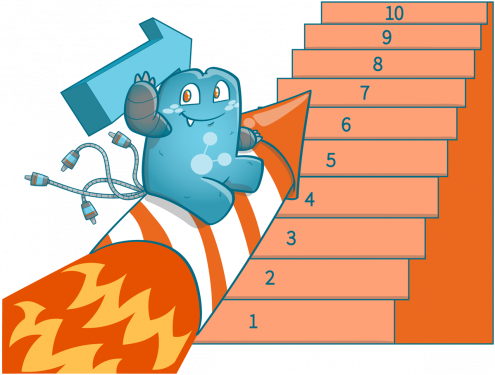Top 10 SEO Internal Linking Benefits: Engage Your Website Visitors

Internal linking is one of the most overlooked aspects of SEO. It’s easy to forget about it and go straight to keyword density and other technical factors that will improve your site’s ranking. Let’s dig deeper into the significant SEO internal linking benefits: higher rankings, better user experience, more backlinks, and more social media shares.
Let’s take a look at some of the top benefits that come from improving your website with internal links!

Internal Linking Benefits for Your Website
Internal links are links from one page of your website to another. They are essential for websites that want to rank in search engines, but they are also helpful for website visitors because internal links can help them find what they’re looking for on your site. Aside from this, internal links also have a positive effect on your SEO. Here is a list that would help you appreciate internal links more.
Enhances Ease of Navigation
The primary benefit of internal linking is it enhances user navigation. If you have a website that is hard to understand, users will get frustrated and leave quickly. This decreases your page views which lowers your rankings in search engines!
By utilizing internal linking correctly, you can help organize content, so users don’t get overwhelmed or lost when they click through on one of their searches for information.
Imagine going 6-pages deep into a website, and you suddenly realize that there is information on the home page you need. However, upon looking at the site, there are no navigational menus or buttons that let you go back there in just a click.
Here, you are left with two options, type the URL again or press the back button times—we know both are not practical. But with internal links placed in navigational menus or buttons, you can simply click the home button/breadcrumb and get transferred instantly to the page you want to go to.
Increases Page Views & Time On-Site
When people visit your site, the overall goal is to maximize the number of pages viewed per session. Internal links are an easy way to accomplish this since it allows people to go directly from one relevant blog post or webpage into another related web page without having to exit out of their current browser tab/window and lose interest (especially if they were following multiple internal links). It’s about keeping them engaged, and internal links are an easy way to do just that.
Increases Search Engine Rankings with High-Quality Content
Every time you link your pages together, it’s like having pages point to an important page. As more links point to your essential pages, priority from search engines is pointed to those pages. This means that the internal links incorporated all over your website can help send priority to the pages you want to rank higher on search engine results pages.
Increases Traffic Which Leads to More Conversations & Social Engagement
By making it easier for readers to navigate your website, you’ll increase the number of pages they can browse through.
If your website doesn’t have internal links that lead visitors to key pages, they are more likely to ‘bounce’ off your site after viewing fewer webpages (and thus not as high-quality traffic).
However, internal linking helps keep them engaged and increases their overall time on site, often leading to increased social media engagements like likes/shares, tweets, etc.
Suppose people spend a few minutes longer reading articles or blog posts on your website due to improved navigation flow via internal links leading from one page onto another. In that case, this makes it much more appealing than if they were only there for a quick read!
Helps in Increasing Site Awareness via Anchor Text Links
Internal linking is also about making it easier for readers to navigate through your site. This means that you’ll be able to create ‘deeper’ pages which will come in handy if more than one page of your website ranks within the first few results on Google, Bing, or Yahoo!
Once a user gets hooked on a topic you’re discussing, there’s a high chance they will want more information about it. Here’s where anchor texts come in.
Anchor texts are the words that appear in links (e.g., click here) or underlined hyperlinks. Without internal links, anchor texts are plainly… text. So, through the use of anchor text links, you can pique users’ curiosity and lead them deeper into your website.
Since internal links are excellent at increasing page traffic, your SEO rankings can also be enhanced. As more visitors go deeper into your site, a significant improvement in your overall search engine optimization metrics will also be seen!
Improves User Experience & Overall Site Navigation Flow
One of our favorite SEO benefits with using internal links effectively is improved user experience (UX). People want easy ways to find what they’re looking for when browsing online, so by utilizing anchor text correctly throughout webpages/posts, you’ll make it much easier for visitors to find exactly what they’re looking for without having to search around the site like a madman (or woman).
Increased Conversions & Increased Sales/Leads
As mentioned earlier, using internal links effectively can make it much easier and faster for readers to navigate through your website. This increases their trust in you as an authority source which can lead to increased conversions over time when done correctly!
For example, if someone has come across your ‘About Us’ page from within Google’s SERPs – that means they were likely already searching related keywords or phrases once they clicked on one of those results.
Suppose this person is interested enough by the content published on your website about a particular topic/product. In that case, it will be MUCH easier to convert them into a customer or client if they can find what they’re looking for quickly.
This is the power of internal linking, making it easier for readers to navigate your website, which increases conversions via improved overall site performance!
Spreads Link Juice All Over Your Website
Internal linking is also about sending signals to search engines that your web pages (posts) are relevant and connected together like pieces of a puzzle when listed within various organic (and paid) SERPs results over time.
If you were writing an article on ‘How To Do SEO,’ then having related keywords/phrases linked up correctly along with anchor text will send strong signals back to Google that this webpage is about ‘SEO’ and should be listed within the top results. It’s all about relevance!
Once your pages are listed on top of search results, more external websites will see your website and know that search engines trust your content. In this case, they might want to link their pages to relevant content on your site.
As more sites link to your pages, your website receives more and more amounts of link juice.

Link Juice and Internal Links
Link juice is a term used to describe the ranking power of a link. In this case, it means that when other websites add links from their site to your website, you can gain rankings because Google will see that these sites trust your website and see it as a trusted source for information about related content.
Through internal links, you can quickly spread the link juice received by your most important pages throughout the rest of your website. Once link juice is spread, the other pages on your website can gain some authority which in turn will make them rank higher on search engine results pages.
Improves Your Website’s Crawlability
Another benefit of having internal links on your website ensures that search engines can easily crawl your web pages. This means that search engines will crawl through all of the pages on your site and index them in their databases which is excellent for when you want more traffic from organic (and paid) SERPs.
Provides Context for Your Visitors & Search Engines
By using internal links effectively, it can help provide context for both readers AND search engine bots as well. For example, suppose a person lands on your website. In the beginning, he might not know anything about what your site is talking about. But as he goes on clicking internal links and getting information from your other pages, he will start to understand the context of your website.
Internal linking also provides context for search engine bots which means that they will be able to see where one webpage is within the structure of another and index those accordingly as well. This ensures that all of your pages are indexed on Google so readers worldwide can find them!
Never let your pages be left unlinked with Internal Link Juicer’s premium plugin! Check our website today to see all its features and capabilities.
Enhancing SEO through Internal Linking
Internal linking sounds complicated and challenging, but once you understand how it works, it’s actually effortless to implement and can provide a massive benefit for your website. As you get more familiar with it, you can create better internal linking strategies and further enhance your web page’s ranking.
A significant part of internal link building is picking the right tool for your website. If you’re looking for one, you can check out Internal Link Juicer and see if its features fit your needs.






